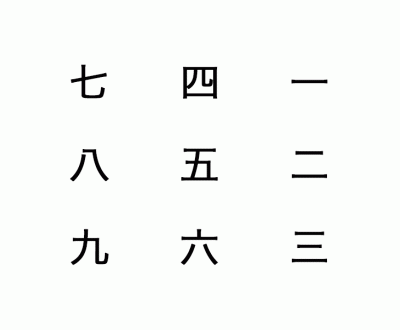How to count in Japanese
The use of Arabic numerals to write numbers has become quite common in Japanese language, but sino-japanese characters kanji are still widely used as well. So, it can help to have a practical knowledge of them.
Japanese language uses some specific ways of counting that we will explain, with tips to easily count and have the good pronunciation.
Digits and Numbers
The basics
In the table below, you will find the basic digits and numbers, written in kanji, with their corresponding transcription for pronunciation:
For big numbers (over 10,000), the Japanese writing system divides numbers by groups of four digits such as in oku 1,0000,0000 (ten thousand thousand), instead of 100,000,000 (one hundred million).
How to "create" any number
It is quite easy and somewhat logical to write Japanese numbers. Let’s have a look at a couple of examples:
- 34 reads 三十四 san'juuyon (3-10-4);
- 1,546 reads 千五百四十六 sen'gohyaku yon'juuroku (1000-5-100-4-10-6);
- 572,982 reads 五十七万二千九百八十二 gojuunanaman' nisen' kyuuhyaku hachijuuni (5-10-7-10000-2-1000-9-100-8-10-2).
There are some little changes in pronunciation for a few of them:
- 300 三百 san'byaku (and not san’hyaku);
- 600 六百 roppyaku;
- 800 八百 happyaku;
- 3000 三千 san'zen;
- 8000 八千 hassen.
How to count people
You might be asked quite frequently how many people you are when traveling in Japan, especially in restaurants. To answer, combine the adequate number and the counter for people "nin" (written with the character 人). The two first numbers are exceptions, but the rest is quite logical:
To ask "How many people?" say 何人 nan'nin or 何名様 nan'meesama in a more formal way.
How to count things
Japanese language is rich with many ways to counts objects and various other things aside people. Counters cover so many fields that one can almost say they are countless. Let’s review only the most useful and readily usable by beginners.
The basics
People new to Japanese language might find it hard to memorize all the necessary counters. Here is a helpful tip, that can solve many situations: try using the generic つ tsu suffix, as in the table below:
To ask "How many things?" say いくつ ikutsu.
The specific counters
In the table below, we selected some counters used on an everyday basis. Just add the suffix after the number, but remember that some pronunciations may vary for euphony.
Note that the suffix 番 ban is also used when counting in series (the first, the second, etc.)

